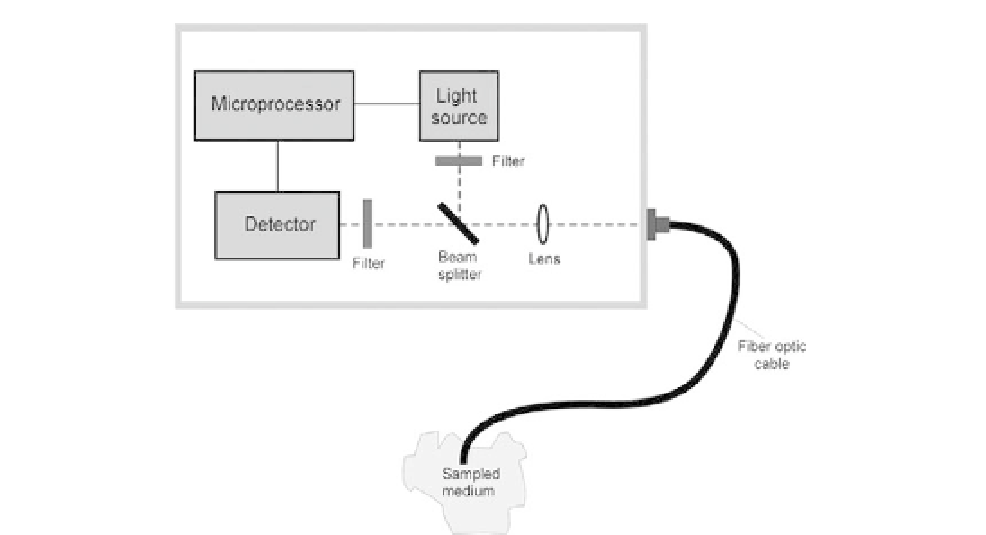Biomedical Engineering Reference
In-Depth Information
FIGURE 10.38
General principle of a fiber optic-based sensor.
fiber. Other sensing mechanisms exploit the evanescent-wave interaction with molecules
that are present within the penetration depth distance and lead to attenuation in reflectance
related to the concentration of the molecules. Because of the short penetration depth and the
exponentially decaying intensity, the evanescent-wave is absorbed by compounds that
must be present very close to the surface. The principle has been used to characterize inter-
actions between receptors that are attached to the surface and ligands that are present in
solution above the surface.
The key component in the successful implementation of evanescent-wave spectroscopy is
the interface between the sensor surface and the biological medium. Receptors must retain
their native conformation and binding activity, and sufficient binding sites must be present
for multiple interactions with the analyte. In the case of particularly weak absorbing
analytes, sensitivity can be enhanced by combining the evanescent-wave principle with
multiple internal reflections along the sides of an unclad portion of a fiber optic tip. Alter-
natively, instead of an absorbing species, a fluorophore
2
can also be used. Light that is
absorbed by the fluorophore emits detectable fluorescent light at a higher wavelength, thus
providing improved sensitivity.
10.6.3 Intravascular Fiber Optic Blood Gas Sensors
Considerable effort has been devoted over the last three decades to develop disposable
extracorporeal sensors (for ex vivo applications) or intra-arterial fiber optic sensors that
2
A compound that produces a fluorescent signal in response to light.

